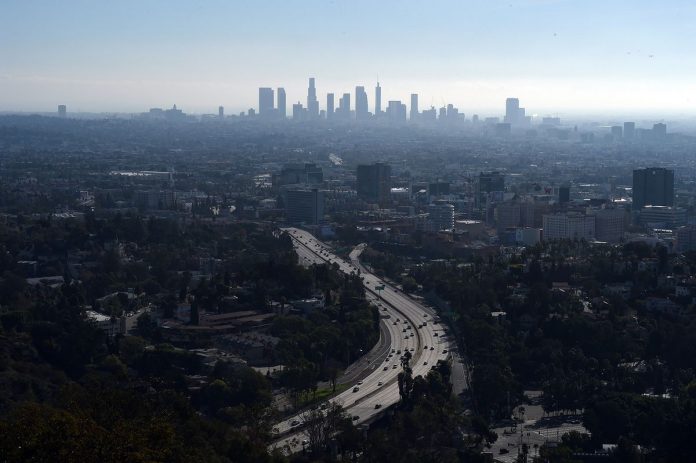
The Public Utilities Commission of Nevada (PUCN) this month approved NV Energy’s Integrated Resource Plan, which will bring 1,001 megawatts of new renewable energy projects to Nevada, including, for the first time, 100 megawatts of battery storage capacity.
Three of the projects will be located in northern Nevada and three will be located in southern Nevada. All projects are expected to be completed and serving customers by the end of 2021.
“Earlier this year we made a promise to our customers that we would double our renewable energy by 2023 and today’s decision puts us closer to reaching that goal, as well as to our long-term commitment to serve them with 100 percent renewable energy,” said Doug Cannon, NV Energy President. “These six new projects, which represent the largest renewable energy investment in Nevada’s history, will also bring great economic benefits to our state.”
These projects represent a direct investment of more than $2 billion in our state’s economy. Over 1,700 construction workers will be needed, and NV Energy required worksite labor agreements to ensure that union craftsmen will participate. Approximately 80 new long-term, permanent jobs will be created. In addition, the Integrated Resource Plan will benefit customers by reducing costs over the next 30 years when compared to relying on wholesale power markets.
These six projects will be added to NV Energy’s current portfolio of approximately 50 solar, geothermal, hydro, wind, biomass, and supported rooftop solar projects – bringing NV Energy’s total renewable energy portfolio to approximately 3,000 megawatts of renewable energy in Nevada.
Six New Power Purchase Agreements:
- Battle Mountain Solar Project – 101 megawatt solar photovoltaic project located near Battle Mountain, Nevada. Includes 25 megawatts of battery energy storage for a four-hour period. It is being developed by Cypress Creek Renewables, which is a privately held solar developer with more than 3,200 megawatts of solar energy projects developed to date across 12 states, with an operational portfolio of 2,200 megawatts. The Battle Mountainproject’s 25MW of battery capacity will be the nation’s largest DC-coupled combined solar and battery storage system.
- Dodge Flat Solar Energy Center – 200 megawatt solar photovoltaic project located east of Reno, Nevada. It is being developed by NextEra Energy Resources, LLC. The Dodge Flat Energy Center will integrate 50 megawatts of battery energy storage for four hours. NextEra Energy Resources, LLC is the world’s largest operator of renewable energy from the wind and sun and one of the largest wholesale generators of electric power in the U.S., with more than 19,000 megawatts of net generating capacity, primarily in 32 states and Canada as of year-end 2017.
- Fish Springs Ranch Solar Energy Center – 100 megawatt solar photovoltaic project located north of Reno, Nevada. It is being developed by NextEra Energy Resources, LLC. The Fish Springs Ranch Solar Energy Center will integrate 25 megawatts of battery energy storage for four hours. NextEra Energy Resources, LLC is the world’s largest operator of renewable energy from the wind and sun and one of the largest wholesale generators of electric power in the U.S., with more than 19,000 megawatts of net generating capacity, primarily in 32 states and Canada as of year-end 2017.
- Eagle Shadow Mountain Solar Farm – 300 megawatt solar photovoltaic project located north of Las Vegas on land owned by the Moapa Band of Paiutes. It is being developed by 8minutenergy Renewables, which is the largest privately-held solar and storage developer in the United States. To date, 8minutenergy Renewables has 10,700 megawatts of solar and storage under development in California, the Southwest, Texas, and the Southeast, and has developed over 1,100 megawatts of solar power plants now in operation. The Eagle Shadow Mountain Solar Farm is unique because it is currently the lowest-priced solar project in the nation.
- Copper Mountain Solar 5 – 250 megawatt solar photovoltaic project in Eldorado Valley, just south of Boulder City, Nevada. It is being developed by CED Southwest Holdings, Inc., a subsidiary of Consolidated Edison, Inc., CED Southwest Holdings, Inc., owns and operates nearly 2,600 megawatts of renewable generating capacity serving 17 states.
- Techren Solar V – 50 megawatt solar photovoltaic project in Eldorado Valley, just south of Boulder City, Nevada. It is being developed by Techren Solar LLC and will be adjacent to Techren Solar I, II, III and IV, which currently are in the construction stage. With the addition of Techren Solar V, the total Techren project size will be 400 megawatts.


 efforts and knowledge when it comes to going green. She is the Founder and Director of Boston Green Fest, President of Foundation for a Green Future, and has been recognized with more awards than we can list here. Dr. Weber took exception to the article and as a devoted fan to the heavyweight champion, Organic Farming, she came to its defense and wasn’t about to throw the towel in on its future. Rather, she felt a quick and strong counter was just what the doctor ordered against the challenger, “Conventional Farming.” So without further ado, let’s start round two of this battle with Dr. Weber’s response and we’ll let you, our audience, be the judge on whether there’s a winner, loser, or possibly a draw in this match-up.
efforts and knowledge when it comes to going green. She is the Founder and Director of Boston Green Fest, President of Foundation for a Green Future, and has been recognized with more awards than we can list here. Dr. Weber took exception to the article and as a devoted fan to the heavyweight champion, Organic Farming, she came to its defense and wasn’t about to throw the towel in on its future. Rather, she felt a quick and strong counter was just what the doctor ordered against the challenger, “Conventional Farming.” So without further ado, let’s start round two of this battle with Dr. Weber’s response and we’ll let you, our audience, be the judge on whether there’s a winner, loser, or possibly a draw in this match-up.
